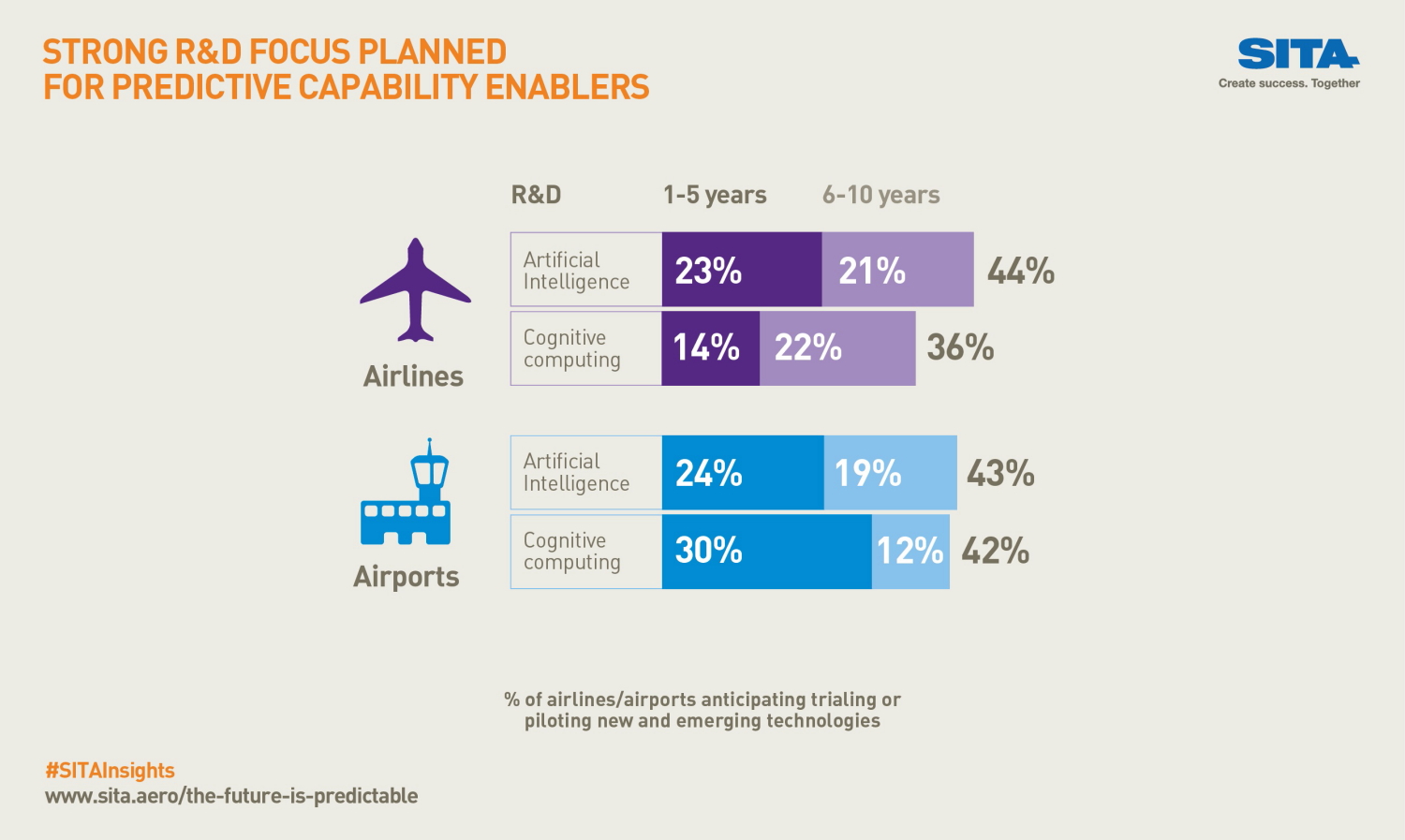|
Airlines and airports are investing in
technologies to help predict and prepare for future events. This
is according to The Future is Predictable, a report published by
air transport IT provider, SITA.
The report outlines how efforts are being
made to tackle the estimated US$25 billion cost of flight
disruptions to the air transport industry by harnessing artificial
intelligence, cognitive computing, predictive analytics and other
progressive technical capabilities.
SITA�s analysis reveals that predictive tools
using artificial intelligence and cognitive computing are likely
to be adopted by half of airlines and airports over the coming
five to ten years. However, a few front runners are already
trialing predictive modeling, machine learning, and data mining.
These efforts are mainly focused on initiatives that will provide
passengers with more relevant information about their journey to
create more seamless and personal experiences.

Nigel Pickford, Director Market Insight at SITA, said, �There is a
desire to remove as much uncertainty as possible during travel.
Airlines and airports are focusing on technologies that will make
them more responsive to issues in their operations. This will
enable them to improve their performance and customer services. At
SITA we are funneling investment into specific research around
disruption management. Our technology research team, SITA Lab, is
currently developing disruption warning and prediction
capabilities using industry-specific and public data feeds such as
Twitter, to help tackle this huge challenge and reduce this
tremendous cost to the industry.�
During 2017, SITA
Lab will be validating delay predictions with airlines and
airports and expects to complete up to five trials with its
industry partners. The next stage will be to incorporate its delay
prediction algorithm and disruption warning feeds into SITA�s services to the air transport industry.
In the
report, leading airports and airlines share their experiences
including Gatwick Airport where a seamless passenger experience
from curb to gate is the goal. Several different areas of
airport activity are tracked to measure performance and move
towards predicting it. Chris Howell, Head of Business Systems,
Gatwick Airport, said, �We�ve moved from �how did we do?� to �how are we doing?�
and can now also answer �how will we do?��
As
artificial intelligence develops the importance of maintaining the
human touch is not lost on the airlines and airports. Indeed, the
combination of people and artificial intelligence is described as
transforming the travel experience. In a case study on European
low cost carrier, easyJet, Alberto Rey-Villaverde, Head of Data
Science, easyJet, said, �AI plus the human element is more powerful than AI alone.�
The science of artificial
intelligence is developing quickly and airlines and airports are
turning to the academic community to help them with predictive
tools to tackle disruptions. SITA�s report discusses research that
is being carried out with scientists from Binghamton University,
State University of New York; University of Nottingham as part the
European Union-funded consortium PASSME; Carnegie Mellon
University; Oxford University�s Data Science Laboratory in the
Mathematical Institute and University College London School of
Management.
The Future is Predictable
combines SITA�s global industry experience and studies with
commentary and case studies from airports and airlines that are
investing in the latest research and technologies. Those featured
include: Gatwick Airport, easyJet, Brussels Airport Company, Delta
Air Lines, Emirates, Denver International Airport, KLM and
Meridiana along with industry perspectives from International Air
Transport Association (IATA) and Airports Council International
(ACI).
|
Headlines: |
|
See latest
HD Video
Interviews,
Podcasts
and other
news regarding:
SITA,
Trends,
Future.
|
